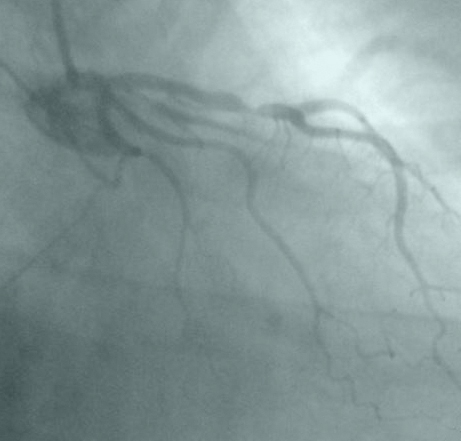Purpose

Coronary artery bypass surgery is used to treat symptoms of coronary artery disease that do not improve with medication, lifestyle changes, or minimally invasive procedures, such as angioplasty. During bypass surgery, blood vessels are removed from another part of the body and used to create a new route for the heart’s blood supply to bypass blockages in the coronary arteries. This allows oxygen-rich blood to reach the heart.
The surgery is performed through a chest incision. The surgeon will decide if the surgery will be done with or without the use of a heart-lung bypass machine. In many cases, the heart needs to be stopped temporarily. A heart-lung bypass machine takes over for the heart and lungs during the operation. In some cases, surgery is done without the bypass machine. With this approach, special surgical devices are used to hold portions of the heart still during the surgery.
Some patients may undergo minimally invasive coronary bypass surgery that does not require the heart-lung bypass machine. This surgery is known as minimally invasive cardiac surgical coronary artery bypass graft (MICS CABG) and is performed via a smaller incision in the rib cage.
Description
Once you are confirmed for bypass surgery, this is what you may expect.
- Blood tests, an electrocardiogram, and chest X-rays are done before the procedure.
- A consent form must be signed before the operation. Before signing, it is important that you ask any questions you have.
- Once in the cardiac operating room, anesthesia is administered which ensures you will remain unconscious throughout the operation and not feel any pain.
- Incisions are made through your chest and breastbone to allow the surgeons access to the heart.
- If the surgeon decides that an on-pump procedure is the best option, you will be connected to a heart-lung machine (also called a heart-lung bypass machine). This takes over the heart’s job of pumping blood to the rest of the body during the surgery.
- Once the heart-lung machine is pumping blood, your heart is temporarily stopped.
- Healthy blood vessels are taken from your chest, leg, arm, or elsewhere in the body.
- These healthy blood vessels will be connected to the heart to let blood flow around the blocked portions of your heart’s arteries.
- Once the new vessels are connected, your heart will be restarted and all incisions closed.
- You will stay in the Cardiac Surgery Intensive Care Unit (CSICU) for 24 hours or until intensive care is no longer required.
- When medically ready (usually within one to two days), you will be moved to a regular hospital room. The average hospital stay following the procedure is five to seven days.
Patient instructions
Before any scheduled coronary bypass operation, expect to visit the Pre-Admission Unit. The purpose of this appointment is to meet with the anesthetist, complete some routine pre-operative blood tests, have chest X-rays done, and meet with the nurse for a final pre-operative information session.
On the day of surgery, bring all the medications you use (including non-prescription drugs and supplements) to the hospital. They should be in their original containers and packaging. This is so that the nursing and medical staff can do a final medication check.
Do not eat or drink after midnight the night before surgery.
Additional info
Patients and their families are asked to attend a class prior to discharge in order to obtain post-operative care instructions. At this session, you will receive the Cardiac Surgery Patient Guides with information about your specific surgery. A nurse will review with you which medications you will be taking once discharged and answer any questions you might have.

